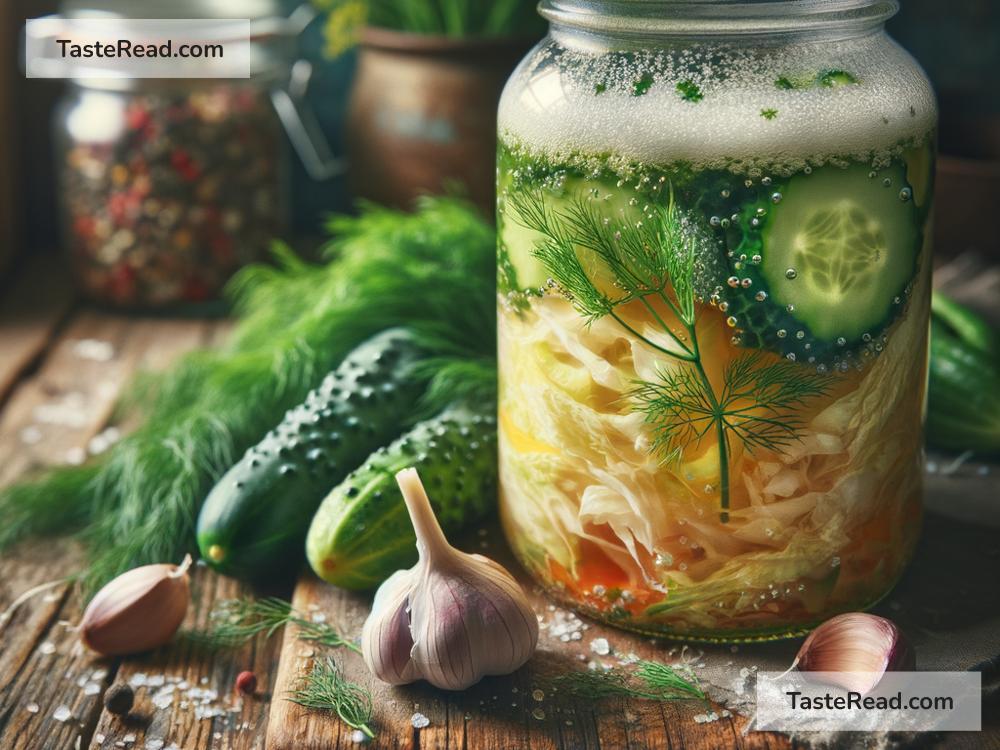How Fermentation Changes the Flavor Profile of Vegetables Like Cabbage and Cucumbers
Fermentation has been around for thousands of years, and it’s one of the oldest ways humans have preserved food. But fermentation doesn’t just help extend the shelf life of food—it also transforms the flavor, texture, and nutritional qualities of simple vegetables. Have you ever wondered why fermented foods like sauerkraut and pickles taste so different from their raw counterparts? In this blog, we’ll explore how fermentation changes the flavor profile of vegetables like cabbage and cucumbers in simple, easy-to-understand language.
What is Fermentation?
Fermentation is a natural process where beneficial microorganisms like bacteria and yeast break down sugars and starches in food. The most common type of fermentation used with vegetables is lactic acid fermentation. This happens when lactic acid bacteria (LAB), which are naturally found on vegetables, convert the sugars into lactic acid.
This process not only preserves the vegetables but also creates a rich, tangy flavor. It’s the same process used to make yogurt, kimchi, sourdough bread, and other delicious foods.
The Flavor Journey of Fermentation
Raw vegetables like cabbage and cucumbers have a mild, fresh flavor. But when you ferment them, they go through a complete transformation.
-
Tanginess Develops
One of the most noticeable changes during fermentation is the introduction of tanginess. As lactic acid bacteria work their magic, they produce lactic acid, which gives fermented vegetables a sour, zesty taste. This tangy flavor is the hallmark of foods like sauerkraut (fermented cabbage) and pickles (fermented cucumbers). The longer the fermentation process, the more acidic and punchy the flavor will be. -
Umami Emerges
Fermentation doesn’t just make vegetables sour—it also adds depth and complexity to their taste. This is where umami, often called the “savory” flavor, comes into play. During fermentation, proteins and compounds in the vegetables break down, creating flavors that are richer and more complex than the original raw vegetable. This is why sauerkraut and kimchi have such bold and memorable flavors. -
Sweetness Balances the Sour
Believe it or not, fermentation doesn’t eliminate all the natural sweetness of the vegetables—it actually enhances it in a subtle way. For example, the sugar in cucumbers or cabbage is partially preserved during fermentation. This natural sweetness balances out the tanginess, making the overall flavor profile of fermented vegetables more interesting and multi-dimensional. -
Aromatic Complexity Appears
Another change during fermentation is the development of new aromas. Raw vegetables like cucumbers smell fresh and clean, while fermented foods take on earthy, pungent, and sometimes spicy notes. This happens because fermentation produces a variety of byproducts like esters and sulfur compounds, which contribute to complex aromas. -
Reduction of Bitterness
If raw vegetables like cabbage have any natural bitterness, fermentation can mellow it out. The lactic acid bacteria break down compounds responsible for bitterness, creating a smoother, more enjoyable taste.
Why Do These Flavor Changes Happen?
The changes in flavor during fermentation occur due to the activity of lactic acid bacteria. These microorganisms are like tiny chefs working behind the scenes. They digest sugars, create acids, and trigger chemical reactions that reshape the taste of vegetables.
Here’s a simplified breakdown of the chemical effects:
– Acid Production: The bacteria create lactic acid, which makes fermented vegetables tangy.
– Enzymatic Reactions: Enzymes produced during fermentation break down starches, proteins, and fats, giving the vegetables a more savory, umami-rich flavor.
– Gas Release: Carbon dioxide is a byproduct of fermentation, and it helps give fermented vegetables a slight fizz or bubbly texture at times (seen in kimchi or fizzy pickles).
– Esters and Alcohols: These compounds contribute to new aromas and flavors, making fermented foods smell and taste more complex.
The Role of Ingredients and Time
The specific flavor profile of a fermented vegetable depends on several factors:
– Salt: Salt is typically added to draw water out and create a brine where the bacteria can thrive. It also helps suppress harmful bacteria while enhancing the flavor of the final product.
– Spices and Herbs: Many fermented foods use spices like garlic, dill, or chili flakes to elevate the flavor further. These ingredients infuse the brine and vegetables, creating unique tastes.
– Fermentation Duration: The longer a vegetable ferments, the stronger and more pronounced its flavor becomes. A short fermentation creates lightly tangy vegetables, while a longer fermentation results in deep, bold flavors.
Benefits of Fermented Vegetables
Aside from flavor changes, fermentation has other benefits. It boosts the nutritional profile of vegetables by increasing the availability of vitamins like B12 and creating probiotics, which are good for gut health. Plus, fermented foods are easy to digest because the bacteria have already broken down complex compounds.
Final Thoughts
Fermentation is truly a magical process that turns simple vegetables like cabbage and cucumbers into flavor-packed delights. Through the work of beneficial bacteria, their raw, mild taste is transformed into tangy, savory, and complex creations like sauerkraut and pickles. Whether you enjoy a crisp dill pickle with your sandwich or savor spicy kimchi with a bowl of rice, fermented vegetables prove that nature is an expert chef.
So, the next time you bite into a pickle or a spoonful of sauerkraut, take a moment to appreciate the science and art of fermentation—and how it brings ordinary veggies to life!


